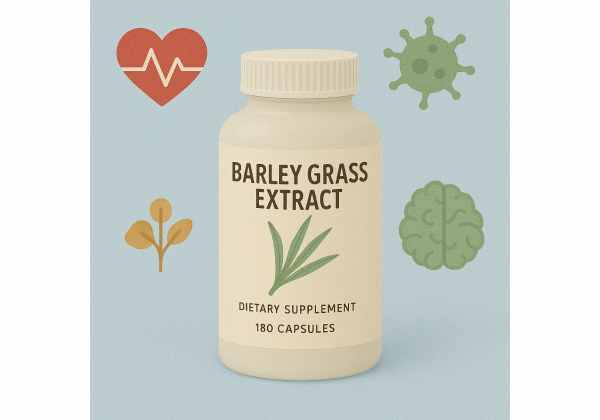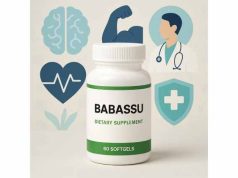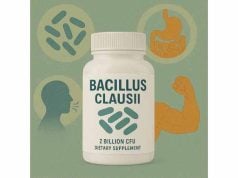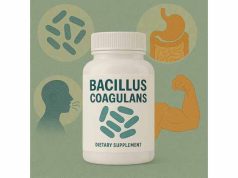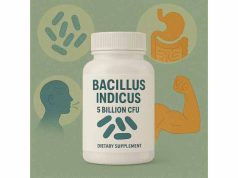Can a simple grass rejuvenate your energy, protect your cells, and support digestive health? Barley grass extract—made from the young, vibrant shoots of the barley plant—has earned a place among the world’s most popular supergreens, praised for its rich nutritional profile and diverse health benefits. Barley grass extract is loaded with chlorophyll, vitamins, minerals, enzymes, and powerful antioxidants that work together to support immunity, alkalize the body, and promote detoxification. This comprehensive guide covers everything you need to know about barley grass extract: what it is, how it works in the body, top evidence-based benefits, proper dosage and timing, potential side effects, and frequently asked questions. Explore each section to discover if barley grass extract is the right addition to your wellness routine.
Key Takeaways
- Barley grass extract is a nutrient-dense green superfood made from the young leaves of the barley plant, packed with vitamins, minerals, and chlorophyll.
- Key benefits include boosting antioxidant defenses, supporting immune function, aiding detoxification, and providing natural energy.
- It is generally safe for most people but may cause mild digestive effects in sensitive individuals or interact with certain medications.
- Typical dosages range from 2–6 grams daily, and the extract is available as powders, capsules, juices, and tablets.
- Its alkalizing and cleansing properties make it popular in detox, energy, and anti-inflammatory wellness plans.
Table of Contents
- Barley Grass Extract Overview: Nutrition and Traditional Uses
- How Barley Grass Extract Works: Bioactive Compounds and Mechanisms
- Evidence-Based Benefits of Barley Grass Extract for Health
- Barley Grass Extract Safety, Potential Side Effects, and Interactions
- Barley Grass Extract Dosage, Best Usage, and Administration Tips
- Barley Grass Extract Frequently Asked Questions (FAQ)
Barley Grass Extract Overview: Nutrition and Traditional Uses
Barley grass extract is derived from the tender, young shoots of the barley plant (Hordeum vulgare), harvested before the grain develops. While barley grain is a dietary staple worldwide, the grass itself has long been celebrated in ancient and modern cultures for its impressive nutritional value. Used in both Eastern and Western herbal traditions, barley grass is often juiced, powdered, or extracted to concentrate its nutrients for daily supplementation.
What Sets Barley Grass Extract Apart?
Unlike the mature barley grain, which contains gluten and is typically used for bread and beer, barley grass harvested early contains virtually no gluten and is naturally low in calories. The extract captures the full spectrum of essential nutrients found in these vibrant green shoots, including:
- Chlorophyll: The green pigment that acts as a natural cleanser and detoxifier.
- Vitamins: High levels of vitamin A (beta-carotene), vitamin C, vitamin K, several B vitamins (including B1, B2, B6, and folate), and vitamin E.
- Minerals: Rich in potassium, calcium, magnesium, iron, copper, phosphorus, and zinc.
- Antioxidants: Includes superoxide dismutase (SOD), flavonoids, and polyphenols that protect against oxidative stress.
- Amino Acids: Contains all essential amino acids, making it a valuable source of plant protein.
- Enzymes: Natural enzymes like SOD and catalase support cellular health and metabolic efficiency.
- Dietary Fiber: Promotes digestive regularity and gut wellness.
Traditional Uses Around the World
Barley grass has roots in ancient medicine, from the healing temples of Egypt to the holistic diets of ancient Greece, Rome, and China. It has been used for:
- Enhancing vitality and energy
- Promoting wound healing and tissue repair
- Supporting healthy digestion
- Reducing inflammation and fever
Modern wellness trends have further popularized barley grass in green juices, detox cleanses, and superfood blends.
How Is Barley Grass Extract Produced?
After harvesting, young barley grass is quickly dried at low temperatures and then powdered or juiced. Some supplements use a cold-press or freeze-drying process to maximize nutrient retention. The resulting extract is highly concentrated, requiring just a small amount daily to deliver noticeable benefits.
Who Can Benefit from Barley Grass Extract?
- Anyone seeking a convenient, plant-based source of vitamins and minerals
- People on low-calorie or anti-inflammatory diets
- Those wanting to boost natural energy or improve recovery from stress
- Individuals interested in detox, gut health, or supporting their immune system
Forms Available
- Powders: Easily added to water, juice, smoothies, or recipes
- Capsules/Tablets: Convenient for travel or those who dislike the grassy flavor
- Liquid Extracts/Juices: Highly absorbable, but must be used quickly
- Superfood Blends: Combined with wheatgrass, spirulina, or chlorella for synergistic effects
Summary Table: Barley Grass Extract at a Glance
| Feature | Details |
|---|---|
| Source plant | Young shoots of Hordeum vulgare |
| Key nutrients | Chlorophyll, vitamins A/C/K, minerals |
| Main forms | Powder, capsule, juice, tablet |
| Traditional uses | Energy, detox, wound healing, digestion |
| Modern uses | Superfood, green juice, detox cleanse |
Barley grass extract’s combination of ancient wisdom and modern research makes it a smart addition to any health-focused lifestyle.
How Barley Grass Extract Works: Bioactive Compounds and Mechanisms
What gives barley grass extract its reputation as a “supergreen”? The secret lies in its complex array of bioactive nutrients and phytochemicals, which work in harmony to support multiple body systems. Here’s how barley grass extract interacts with your physiology for noticeable wellness gains.
1. Chlorophyll: The Green Detoxifier
- Detoxification: Chlorophyll binds to toxins and heavy metals in the digestive tract, helping the body eliminate them safely.
- Alkalizing Effect: It helps counteract acidity from processed foods, balancing blood pH for better energy and reduced inflammation.
- Cellular Oxygenation: Promotes improved oxygen delivery to cells, supporting healing and endurance.
2. Antioxidant Enzymes and Polyphenols
- Superoxide Dismutase (SOD): This enzyme neutralizes superoxide radicals, protecting cells from oxidative stress and slowing the aging process.
- Catalase and Peroxidase: Further help break down harmful byproducts of metabolism.
- Flavonoids & Polyphenols: Provide broad-spectrum antioxidant protection, guarding against DNA damage and chronic inflammation.
3. Rich Vitamin and Mineral Content
- Vitamin A (Beta-Carotene): Essential for eye health, skin repair, and immune resilience.
- Vitamin C: Strengthens immune defenses and supports collagen production.
- Vitamin K: Vital for blood clotting and bone health.
- Magnesium, Potassium, and Calcium: Maintain electrolyte balance, support muscle and nerve function, and contribute to cardiovascular health.
4. Amino Acids: Plant-Based Protein Power
Barley grass provides all nine essential amino acids, making it a complete source of plant protein. Amino acids are crucial for:
- Muscle repair and growth
- Neurotransmitter balance (affecting mood and cognition)
- Supporting the immune system
5. Fiber: Prebiotic for the Gut
- Digestive Support: Soluble and insoluble fiber feed beneficial gut bacteria, promote regularity, and support colon health.
- Satiety: Helps with appetite control and healthy weight management.
6. Anti-inflammatory Effects
- Alkaloids and Saponins: May help reduce inflammation markers, support joint comfort, and lower the risk of chronic disease.
7. Enzyme Support for Metabolic Health
- Natural enzymes in barley grass may boost nutrient absorption, improve digestion, and support metabolic detoxification pathways.
How Do These Compounds Work Together?
Barley grass extract’s unique synergy:
- Cleanses and alkalizes the body
- Protects against oxidative and environmental stressors
- Fuels natural energy production without stimulants
- Helps maintain healthy blood sugar and cholesterol
Why Whole-Plant Extracts Matter
Using a full-spectrum barley grass extract preserves the natural balance of nutrients and bioactive compounds, offering more comprehensive benefits than isolated vitamins or minerals alone.
Summary Table: Barley Grass Extract Mechanisms
| Compound/Nutrient | Main Actions |
|---|---|
| Chlorophyll | Detox, pH balance, cellular oxygenation |
| SOD & Antioxidants | Fight free radicals, slow aging |
| Vitamins/Minerals | Immunity, bones, nerves, metabolism |
| Amino acids | Muscle, immune, mood support |
| Fiber | Gut health, regularity |
With its rich nutritional complexity, barley grass extract offers far more than basic “greens”—it’s a science-backed foundation for holistic wellness.
Evidence-Based Benefits of Barley Grass Extract for Health
Barley grass extract’s broad benefits are rooted in both ancient use and modern research. Here are the top, evidence-backed ways this green superfood can elevate your health and well-being.
1. Antioxidant and Cellular Protection
- Free Radical Defense: High levels of SOD, vitamin C, and polyphenols help shield your cells from free radical damage—a leading contributor to aging and chronic illness.
- Anti-Aging Potential: By protecting DNA and cell membranes, barley grass extract may support healthier skin, eyes, and overall longevity.
2. Immune System Support
- Strengthening Defenses: Vitamins A, C, and zinc boost immune function, helping the body ward off infections.
- Reducing Inflammation: Chlorophyll, flavonoids, and saponins naturally calm inflammation and may help reduce flare-ups in conditions like arthritis and allergies.
3. Detoxification and Liver Health
- Cleansing Toxins: Chlorophyll binds to toxins, aiding in their removal via the digestive system and supporting liver function.
- Heavy Metal Protection: Early studies suggest barley grass extract may help reduce absorption and retention of heavy metals.
4. Digestive Wellness
- Gut Balance: Prebiotic fiber encourages the growth of good gut bacteria, which supports digestion, nutrient absorption, and immune health.
- Natural Relief: Many people report reduced bloating, better regularity, and improved comfort with regular barley grass use.
5. Energy and Metabolic Support
- Natural Energy Boost: Unlike stimulants, barley grass extract supplies B vitamins and minerals that fuel steady energy production at the cellular level.
- Blood Sugar Regulation: Some research shows potential for improved blood glucose control, making it helpful for those at risk for metabolic syndrome.
6. Alkalizing the Body
- pH Balance: The minerals and chlorophyll in barley grass help counteract dietary acidity, supporting optimal body function and potentially reducing inflammation.
7. Heart and Circulatory Health
- Cholesterol Management: Fiber and antioxidants may help lower LDL cholesterol and support healthy blood pressure.
- Cardiovascular Benefits: Potassium and magnesium contribute to healthy vascular tone and heart rhythm.
8. Skin, Hair, and Eye Health
- Skin Vitality: Antioxidants, vitamins, and chlorophyll support wound healing, clear skin, and may reduce signs of aging.
- Hair Strength: Amino acids and minerals provide building blocks for strong, resilient hair.
- Vision Protection: Beta-carotene (vitamin A) safeguards eyes from oxidative stress.
Who Stands to Gain Most?
- Busy adults seeking a natural energy and nutrient boost
- Those following plant-based, vegan, or anti-inflammatory diets
- Anyone needing gentle detox or immune system reinforcement
- People with digestive imbalances or low intake of leafy greens
Real-Life Experiences
Users often notice:
- Brighter energy and mental clarity
- Improved digestion and gut comfort
- Fewer seasonal illnesses
- Healthier skin and stronger nails
Limitations and Individual Results
- Effects can vary based on dose, diet, and individual health status
- Not a cure or substitute for medical care—works best as part of a balanced, nutrient-rich lifestyle
Summary Table: Barley Grass Extract Benefits
| Benefit | Main Actions | Who Benefits Most |
|---|---|---|
| Antioxidant support | SOD, polyphenols, vitamins | Aging, high-stress adults |
| Immune defense | Vitamins A/C/zinc, flavonoids | Low immunity, busy lives |
| Detox/cleansing | Chlorophyll, fiber, enzymes | Detox, urban dwellers |
| Digestive/gut health | Prebiotics, fiber, enzymes | GI discomfort, low fiber |
| Energy/metabolic boost | B vitamins, minerals, protein | Athletes, fatigue |
| Alkalizing | Minerals, chlorophyll | High-acid diets |
Barley grass extract’s multi-system effects make it a foundation of modern green wellness.
Barley Grass Extract Safety, Potential Side Effects, and Interactions
Barley grass extract is generally considered safe and well-tolerated for most people, especially when taken in appropriate amounts as part of a balanced wellness routine. However, like all concentrated plant-based supplements, it’s important to be aware of possible side effects, interactions, and safety considerations—particularly if you have allergies, take medications, or have underlying health conditions.
General Safety Overview
Barley grass has been consumed for thousands of years with minimal adverse effects. Modern manufacturing standards further reduce risk, but sensitivity can vary among individuals. Most adults and teens experience only benefits, but it’s wise to listen to your body and start with lower doses.
Potential Side Effects
While adverse reactions are rare, a small percentage of users may experience:
- Mild Digestive Upset: Gas, bloating, stomach cramps, or changes in stool frequency are the most commonly reported effects. These usually subside as your body adjusts to increased fiber and plant compounds.
- Allergic Reaction: Though uncommon, people with grass allergies, especially to cereal grains or pollen, should use barley grass extract with caution. Symptoms can include itching, rash, sneezing, or, rarely, swelling or difficulty breathing.
- Headache or Fatigue: Sudden detoxification or die-off of gut bacteria may cause mild, short-lived symptoms in sensitive users.
- Loose Stools: The high fiber and magnesium content may promote bowel movements, which can be helpful for constipation but may be uncomfortable for some.
Who Should Use Extra Caution
- Gluten Sensitivity and Celiac Disease: Young barley grass, harvested before the grain forms, is naturally gluten-free. However, cross-contamination is possible if processed in facilities that handle barley grain. Look for certified gluten-free products if you have celiac disease or severe gluten sensitivity.
- Grass and Pollen Allergies: If you are highly allergic to grass or pollen, consult an allergist before use or start with very small amounts.
- Pregnancy and Breastfeeding: Barley grass extract is generally considered safe in food-like amounts, but there is limited research on supplemental doses. Pregnant or nursing women should consult a healthcare provider before use.
- Children: Safe for most children when consumed in small, food-based servings, but concentrated supplements should be discussed with a pediatrician.
Drug and Supplement Interactions
Barley grass extract may interact with:
- Blood Thinners (e.g., Warfarin): Because barley grass is high in vitamin K, it can reduce the effectiveness of anticoagulants. If you take blood thinners, keep vitamin K intake consistent and notify your healthcare provider of any dietary changes.
- Diuretics and Blood Pressure Medications: The potassium and magnesium in barley grass can influence electrolyte balance. Use caution and monitor blood pressure and potassium levels if you take these medications.
- Diabetes Medications: The fiber and antioxidants may modestly lower blood glucose, so those taking diabetes drugs should monitor blood sugar levels closely.
Other Safety Considerations
- Quality Assurance: Choose reputable brands that use certified organic, non-GMO barley grass, and perform third-party testing for purity and heavy metals. Avoid supplements with unnecessary fillers, artificial colors, or preservatives.
- Start Low, Go Slow: Especially if new to supergreens, begin with half the recommended dose and gradually increase to minimize digestive upset.
- Hydration: Barley grass extract increases fiber and plant compound intake, so drink extra water to support healthy digestion and detoxification.
Signs to Discontinue Use and Seek Medical Advice
- Persistent or severe digestive discomfort
- Rash, itching, swelling, or breathing difficulties
- Yellowing of the skin or eyes (rare, but could indicate liver issues)
- Unexplained bruising or bleeding (especially for those on blood thinners)
Summary Table: Barley Grass Extract Safety Profile
| Safety Aspect | Who Should Be Cautious | Recommendations |
|---|---|---|
| Gluten cross-contamination | Celiac, gluten-sensitive | Certified gluten-free product |
| Grass/pollen allergies | Allergy-prone individuals | Allergy test, start low |
| Blood thinners | Warfarin or similar medications | Monitor INR, consistent intake |
| Pregnant/nursing women | Those pregnant or breastfeeding | Consult provider before use |
| Digestive conditions | IBS, sensitive stomach | Gradual introduction, monitor response |
Conclusion on Safety
For most healthy adults, barley grass extract is a gentle, nutritious addition to the diet with very low risk. As with any supplement, awareness of your unique needs and communication with your healthcare provider ensures safe and effective use.
Barley Grass Extract Dosage, Best Usage, and Administration Tips
Getting the most out of barley grass extract depends on choosing the right dosage, timing, and form for your goals and lifestyle. Here’s how to use this green superfood for maximum benefit—whether you’re adding it to smoothies, using capsules, or mixing with water.
Recommended Dosage Ranges
- Powdered Extract: The most common form, with typical daily dosages ranging from 2–6 grams (about 1–2 teaspoons), split into one or two servings. Beginners should start at 1–2 grams and increase gradually.
- Capsules/Tablets: Standard dosages usually fall between 500 mg and 1,500 mg per capsule or tablet. Follow the manufacturer’s guidance; 2–6 capsules per day is typical.
- Juice or Liquid Extract: 30–100 ml daily, often diluted in water or juice for improved taste and absorption.
How to Take Barley Grass Extract
- Mixing with Liquids: Powders dissolve easily in water, coconut water, juice, or smoothies. For best taste and texture, blend with cold liquids and combine with citrus or pineapple for natural sweetness.
- Timing: Can be taken at any time of day, but many users prefer morning for a natural energy boost or pre-workout for increased endurance. It can also be enjoyed in the afternoon for a gentle pick-me-up.
- With or Without Food: Barley grass extract is easily digested with or without meals. Those with sensitive stomachs may prefer taking it after food.
- In Recipes: Stir into yogurt, oatmeal, or salad dressings for a subtle green boost.
Practical Usage Tips
- Consistency is Key: For best results, use barley grass extract daily for at least 4–8 weeks to notice energy, digestion, and immunity improvements.
- Combine for Synergy: Barley grass pairs well with other supergreens like wheatgrass, spirulina, and chlorella for enhanced antioxidant and detox benefits.
- Hydration: Drink extra water to support the increased fiber and chlorophyll intake.
Who Should Use a Lower Dose?
- New users or those sensitive to fiber-rich supplements
- People with digestive sensitivities (IBS, Crohn’s, etc.)
- Children, unless otherwise directed by a pediatrician
When Might a Higher Dose Be Appropriate?
- Adults with high levels of oxidative stress or inflammation
- Athletes or those with demanding physical routines
- Individuals on low-vegetable or highly processed diets
How Long Does It Take to Work?
- Digestive effects: Often noticed within days
- Energy, skin, and immune benefits: May take 2–4 weeks of regular use
- Detox and anti-inflammatory effects: Best seen with ongoing, consistent intake
Storage and Shelf Life
- Store barley grass extract in a cool, dry place, away from direct sunlight
- Use within 6–12 months for peak freshness, and tightly seal containers to avoid moisture
Sample Routine for Maximum Benefits
- Morning: 1 tsp (2g) in smoothie with lemon, ginger, and apple
- Pre-workout: Add 1 tsp to coconut water for sustained energy
- Afternoon: Mix 1/2 tsp into herbal tea or water for a mid-day boost
Summary Table: Dosage and Administration
| Form | Typical Daily Dose | How to Use | Best For |
|---|---|---|---|
| Powder | 2–6 g (1–2 tsp) | Smoothies, water, recipes | General wellness, digestion |
| Capsule/Tablets | 1,000–3,000 mg | With or without food | Travel, on-the-go |
| Juice/Liquid | 30–100 ml | Diluted in liquid | Fast absorption, gentle cleanse |
With mindful dosing and regular use, barley grass extract can become a cornerstone of your natural wellness plan.
Barley Grass Extract Frequently Asked Questions (FAQ)
What is barley grass extract and how is it different from barley grain?
Barley grass extract comes from the young green shoots of the barley plant, harvested before the grain develops and contains little or no gluten. It’s rich in chlorophyll, vitamins, minerals, and antioxidants, while barley grain is a carbohydrate-rich food used in bread and beer.
Is barley grass extract gluten-free?
When harvested before the formation of the seed, barley grass is naturally gluten-free. However, some products may be contaminated during processing, so always choose certified gluten-free supplements if you have celiac disease or gluten intolerance.
What are the main benefits of barley grass extract?
Barley grass extract provides antioxidant protection, supports immune and digestive health, promotes detoxification, and delivers natural energy. It’s also valued for alkalizing the body and supplying a broad spectrum of essential nutrients.
How much barley grass extract should I take per day?
Most adults benefit from 2–6 grams of powder daily, or the equivalent in capsules or juice. Start low and increase gradually. Always follow the product’s instructions or your healthcare provider’s advice.
Are there any side effects or interactions with barley grass extract?
Side effects are rare but may include mild digestive changes or allergic reactions in sensitive individuals. People taking blood thinners, diuretics, or diabetes medications should monitor for interactions and consult their doctor before use.
Can children and pregnant women take barley grass extract?
Barley grass extract is generally safe for children and pregnant women in food-like amounts, but always check with a healthcare provider before starting any supplement, especially in these groups.
How can I get the best results from barley grass extract?
For best results, use consistently, drink plenty of water, combine with other supergreens for synergy, and choose high-quality, organic products.
Disclaimer:
This article is intended for informational and educational purposes only. It should not be considered medical advice, nor is it a substitute for professional healthcare consultation, diagnosis, or treatment. Always talk with your doctor before starting any new supplement, especially if you have a health condition, are pregnant, nursing, or take prescription medications.
If you enjoyed this guide, please share it with friends or family on Facebook, X (formerly Twitter), or your favorite social media platform—and follow us for more in-depth, evidence-based wellness articles. Your support helps us continue to provide trusted health resources for all.

